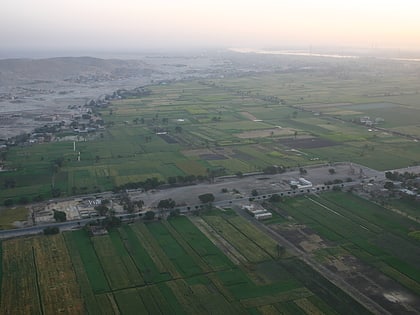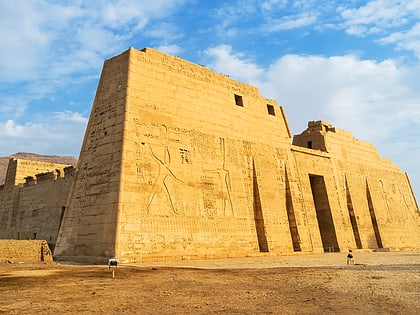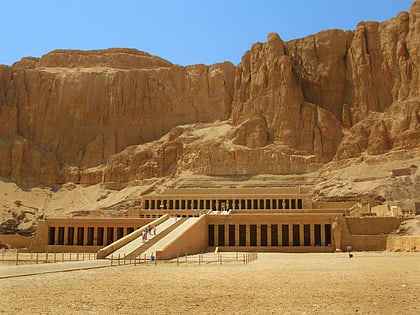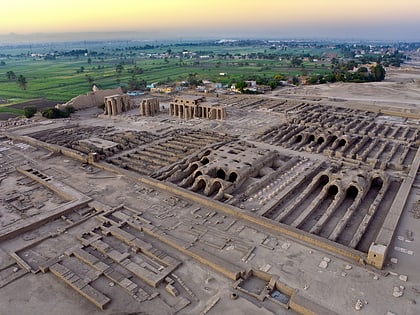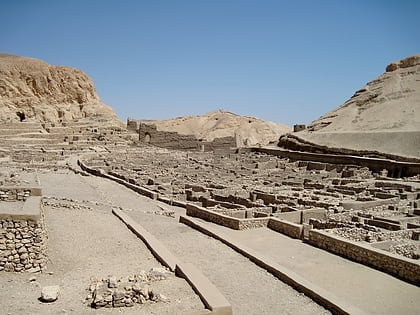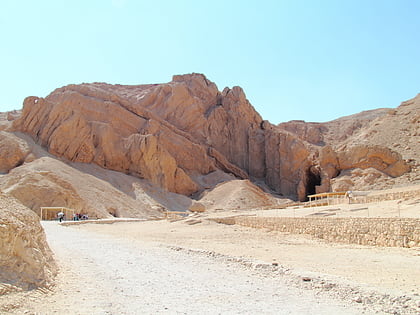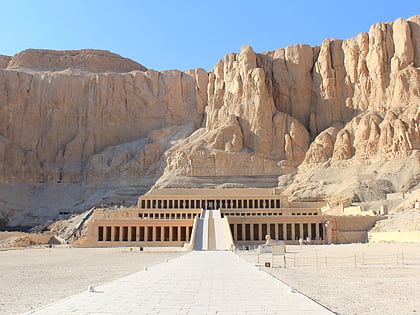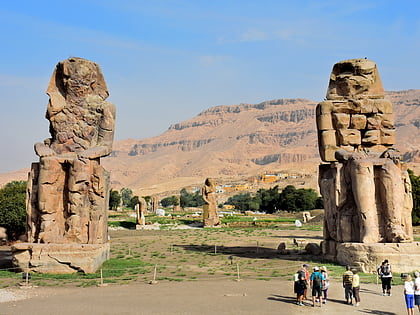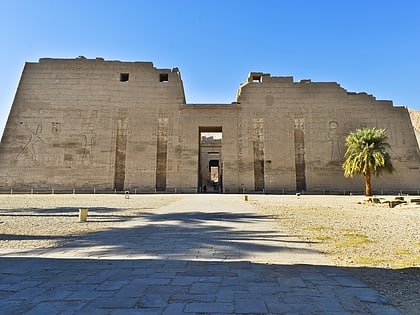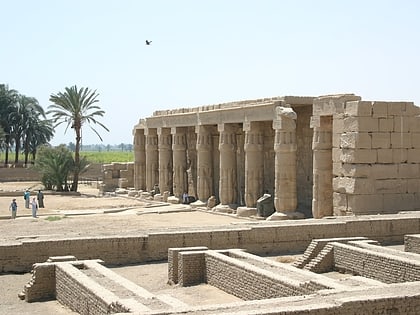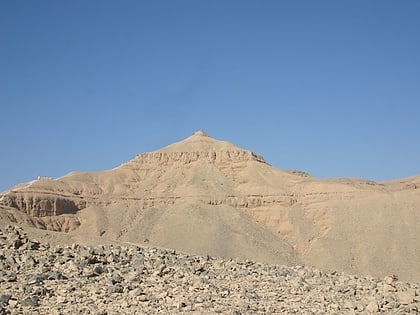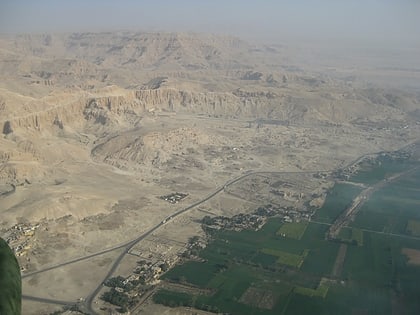Mortuary Temple of Amenhotep III, Luxor
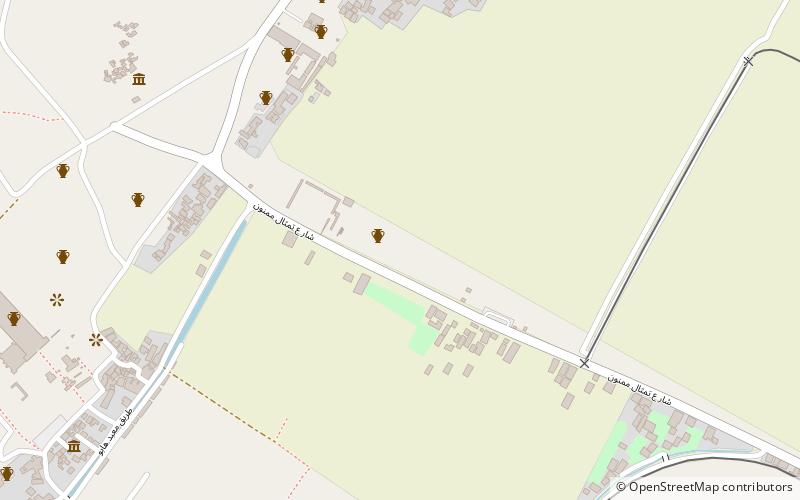
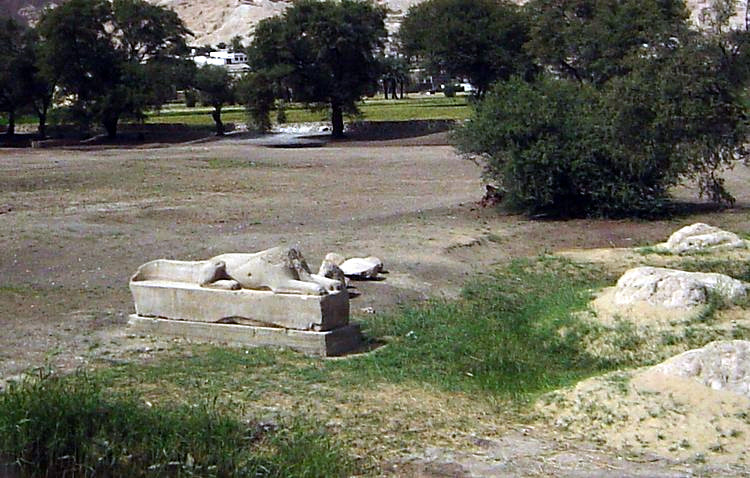
Facts and practical information
The Mortuary Temple of Amenhotep III, nestled in the ancient city of Luxor, is a testament to the grandeur of Egypt's New Kingdom. Situated on the west bank of the Nile, within the Theban Necropolis, this monumental site was once a place of worship and remembrance for one of Egypt's most powerful pharaohs.
Constructed during the 14th century BCE, the temple served as a cenotaph for Amenhotep III, celebrating his reign and ensuring his cult after death. Although time has not been kind to the temple, with much of its structure lost to the ages, the remnants still convey the complex's original magnificence. The site is particularly famous for the Colossi of Memnon, two massive stone statues of the pharaoh that have stood sentinel at the necropolis for millennia.
The temple complex was originally expansive, boasting a wealth of statues, sphinxes, and intricate relief carvings. Despite the ravages of time, the site continues to offer invaluable insights into ancient Egyptian religion and art. Excavations and restorations have revealed a treasure trove of artifacts and structures, including the recently unearthed "Colossi of Memnon and Amenhotep III Temple Conservation Project," which has brought to light additional statues and parts of the temple that had been buried for centuries.
Today, the Mortuary Temple of Amenhotep III is a focal point for archaeologists and historians, as well as a profound cultural heritage site for visitors from around the world. Although much of the temple's former glory lies in ruin, the site remains a powerful connection to Egypt's distant past, inviting visitors to ponder the legacy of an ancient civilization that continues to fascinate.
Mortuary Temple of Amenhotep III – popular in the area (distance from the attraction)
Nearby attractions include: Medinet Habu, Mortuary Temple of Hatshepsut, Ramesseum, Deir el-Medina.
